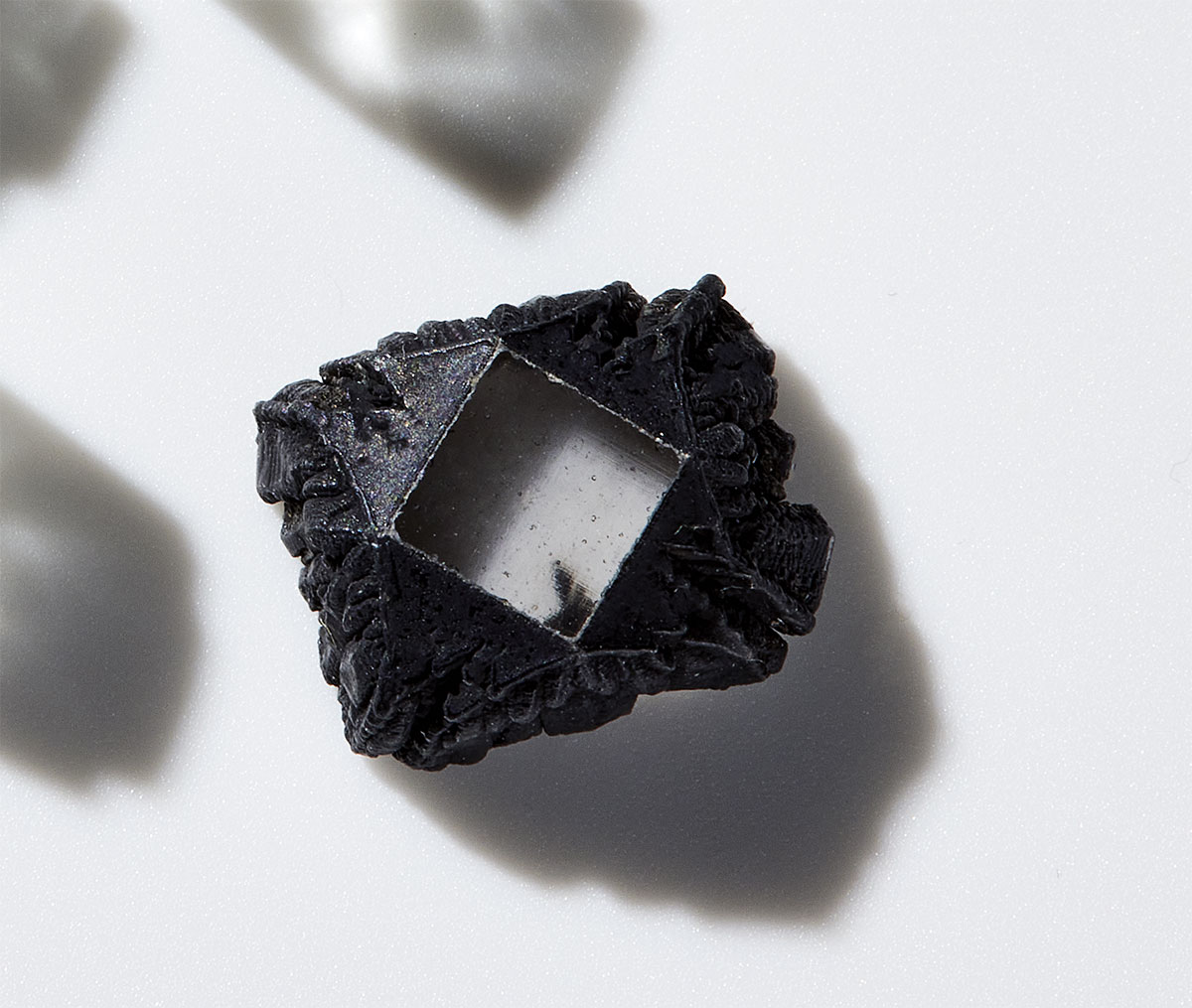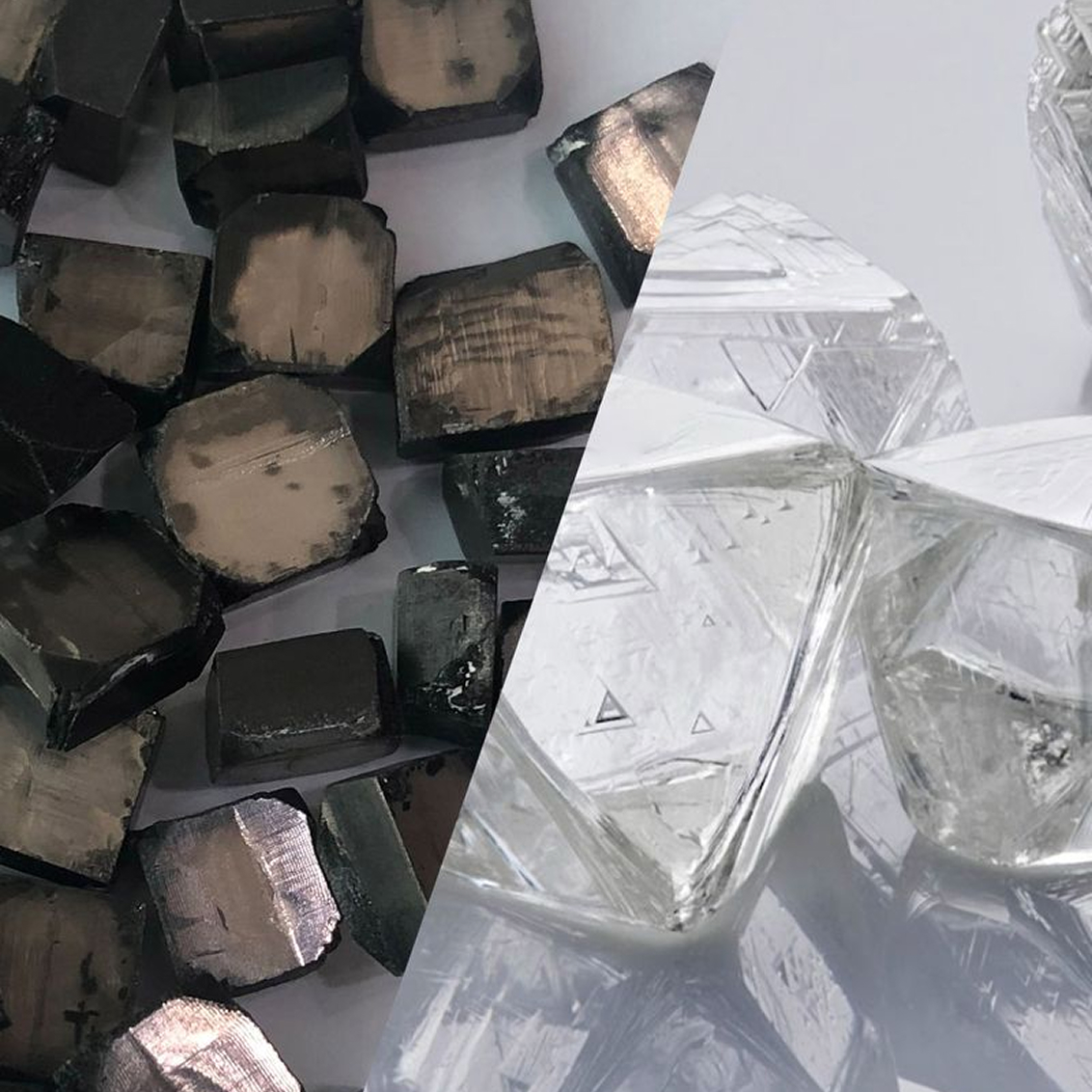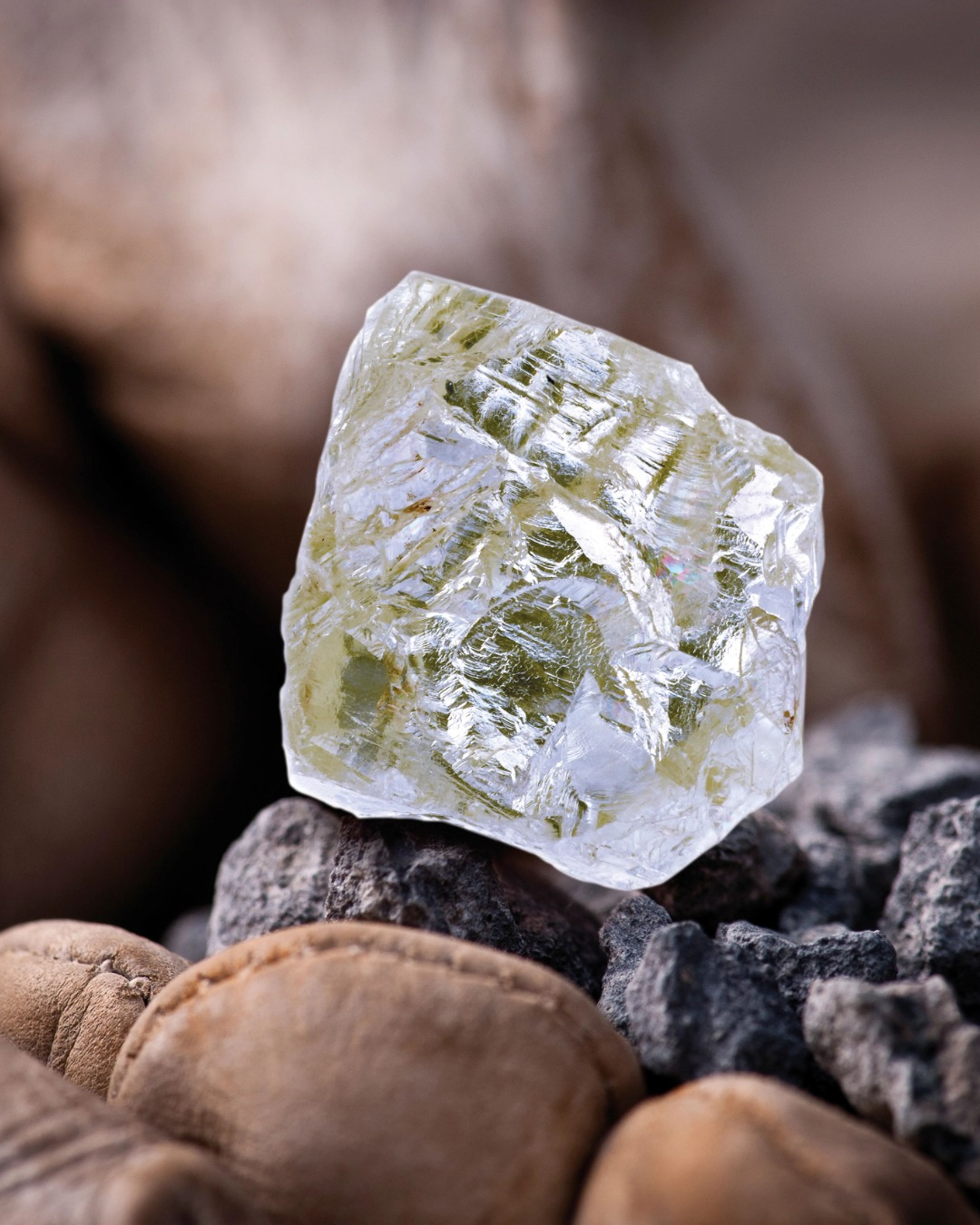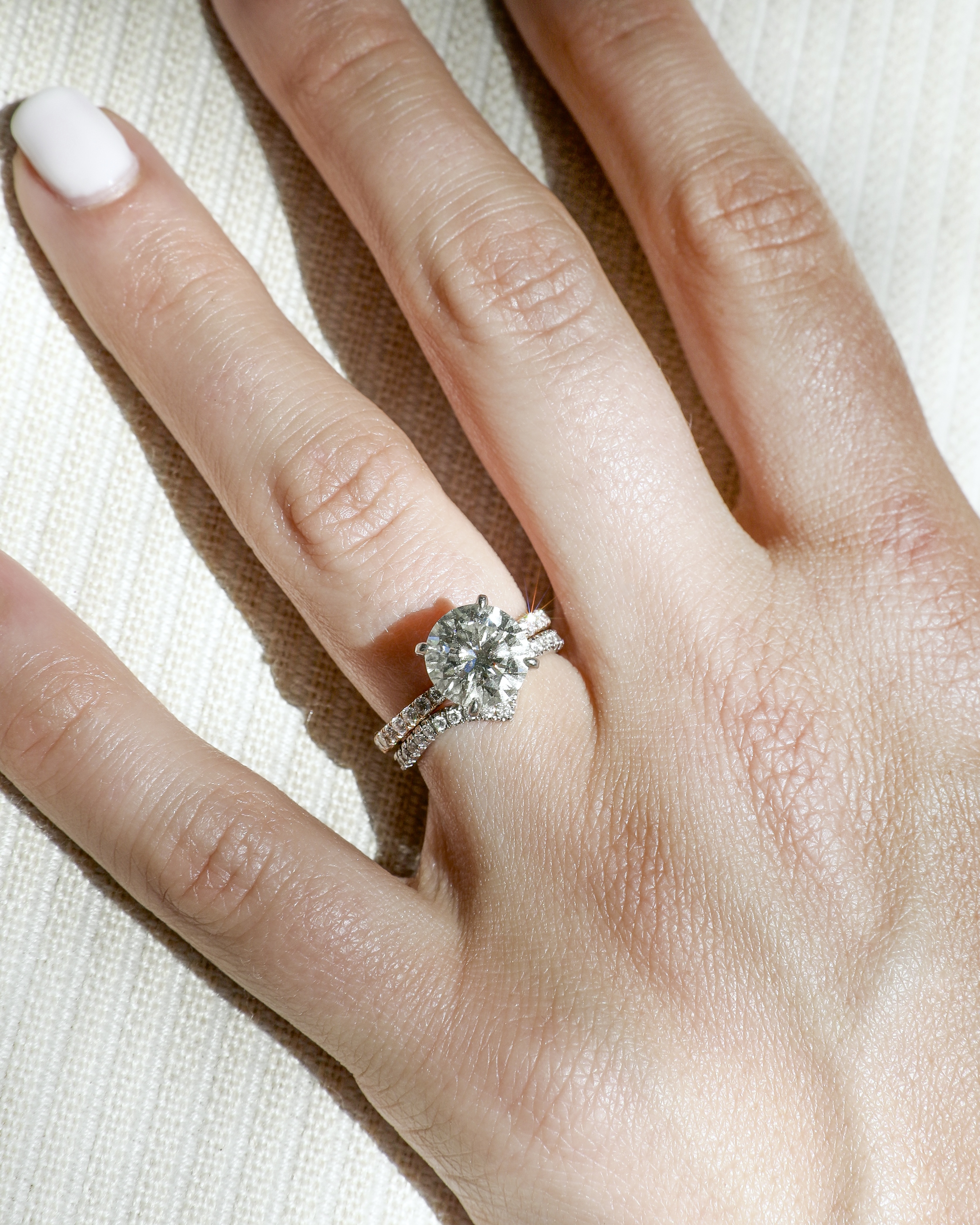Natural Diamonds vs Lab Grown Diamonds
Natural and laboratory-grown diamonds (also known as lab grown diamonds) may look alike, but experts can always distinguish them by analyzing growth patterns and inclusions. Formed by the Earth over billions of years, natural diamonds have appreciated by 2-3% on average per annum over the last 50 years, while the prices of some mass-produced lab grown diamonds fell by more than 80%.
May 23, 2025
By: Editorial Staff
When choosing the right diamond for you, it’s important to understand the differences between natural diamonds and lab grown diamonds.
Although they make look the same to the naked eye, natural diamonds and lab grown diamonds are not the same. Natural diamonds are formed over billions of years deep within the Earth under extreme heat and pressure, making them rare and unique treasures that appreciate over time. In contrast, lab grown diamonds are created in a matter of weeks in factories, possibly in unlimited quantities, which has adversely affected their price.
While lab grown diamonds are marketed as an eco-friendly option, there is no evidence that they are all produced in the same way and with proven impact reports. Natural diamonds contribute significantly to local economies and conservation efforts, ensuring that their recovery supports both livelihoods and environmental preservation worldwide.
What Sets Natural Diamonds Apart from Lab Grown Diamonds?
Natural Diamonds
Lab Grown Diamonds
Always detectable. 99.9% certified conflict free
Always detectable. Must be disclosed.


 Formed Naturally by the Earth
Formed Naturally by the Earth
Natural diamonds are formed deep within the Earth, forged under intense heat and pressure over the course of billions of years.
 Factory Made
Factory Made
The majority of lab grown diamonds are produced in factories in India and China.
 Finite Quality
Finite Quality
Natural diamonds are rare treasures, recovered from limited deposits that can never be replenished.
 Mass-Produced
Mass-Produced
Lab grown diamonds are mass-produced in controlled environments, much like fast fashion.
 3 Billion Years Old
3 Billion Years Old
Natural diamonds, formed over 3 billion years ago, are nature’s ancient treasures—they predate life on Earth and are the oldest thing you can own.
 Made in 3-4 Weeks
Made in 3-4 Weeks
Lab grown diamonds are produced in factories in just 3 to 4 weeks and can be made in unlimited quantities.
 Multiple Types
Multiple Types
Natural diamonds come in a variety of types, each with unique characteristics, from rare colored diamonds to classic colorless ones, making every diamond one of a kind.
 Only Type 2A
Only Type 2A
Lab grown diamonds are classified as Type IIa, a category that is common in factory-made stones due to their controlled production process.
 Benefits Country of Origins
Benefits Country of Origins
Natural diamonds contribute to the prosperity of their country of origin. Up to 80% of rough diamond value stays within local communities by creating jobs, funding essential infrastructure, and conservation efforts.
Frequently Asked Questions
What is a lab grown diamond?
A laboratory grown diamond, also known as a synthetic diamond, lab created diamond, or man-made diamond, is a man-made gemstone that mimics the physical properties and optical properties of a natural diamond. Unlike natural diamonds, lab grown diamonds can be produced in unlimited quantities. Lab grown diamonds are created using advanced technologies such as High Pressure High Temperature (HPHT) or Chemical Vapor Deposition (CVD), which simulate the conditions under which natural diamonds form deep within the Earth’s mantle.
Do lab grown diamonds hold value?
Lab grown diamond prices have dropped significantly, from 80% of the cost of natural diamonds in 2016 to less than 20% by 2024. This dramatic price reduction is largely due to the ability to produce lab grown diamonds in unlimited quantities using methods like Chemical Vapor Deposition (CVD) and High Pressure High Temperature (HPHT). Unlike natural diamonds, which are rare, lab grown diamonds are priced based on production costs and retail markup. As production techniques improve and scale, their value is expected to continue declining until they reach a stable price point.
What is the actual value of natural diamonds?
Like other natural materials, how much natural diamonds cost is based on how rare they are to find in nature. The rarer the natural diamond, the more valuable it will be. Over the last 35 years, natural diamond prices have been shown to appreciate by approximately 3% annually. In its 2019 Global Diamond Industry Report, Bain & Co. found that the diamond market has grown thrice over the past 50 years.
How old are diamonds? Most natural diamonds are between 1 and 3 billion years old. Diamonds form deep within the Earth under intensely high temperatures and pressure, causing carbon atoms to crystallize before being transported to the Earth’s surface by powerful volcanic eruptions, such as kimberlite and lamproite eruptions. Although diamond formation occurs far beneath the Earth’s surface, these eruptions are rare yet immensely powerful, carrying diamonds from the Earth’s mantle to locations where they can be recovered.
These rare and precious gemstones are likely the oldest things you will ever touch, having formed long before any life existed on Earth. The oldest diamonds that have been dated, found in Canada, are 3.7 billion years old.
Are they rare and valuable?
The total amount of natural diamonds one carat and larger recovered in a year would only fill one exercise ball.
The value of a natural diamond derives from its rarity as a finite, natural gemstone. This rarity and finiteness make natural diamonds valuable. Over the last 50 years, natural diamonds have shown to appreciate in price by approximately 2-3% on average per annum. Natural diamonds retain inherent value over time, making them an incredible heirloom and an impactful choice for an engagement ring. However, like other manufactured products, man-made diamonds can be replicated in potentially unlimited quantities. Between 2015 and 2024, the prices of some lab grown diamonds fell by more than 80%.
Are lab grown diamonds unique?
Laboratory grown diamonds, often referred to as lab created diamonds, are not unique. These man-made diamonds are produced in controlled environments, allowing for large-scale production in unlimited quantities. Typically, they are created using two methods: High Pressure High Temperature (HPHT) and Chemical Vapor Deposition (CVD). These techniques replicate the natural processes that form natural diamonds deep within the Earth, but in a much shorter time frame.
Lab grown diamonds are manufactured to the exact specifications set by the producing company. While they share the same chemical composition and physical properties as natural diamonds, natural diamonds result from a truly incomparable journey. No two natural diamonds are alike, each one carrying its own history and story.
How are they created?
Natural diamonds are formed by the heat and pressure of the Earth, from 1 to 3 billion years ago, making a natural diamond the oldest thing you will ever touch.
Natural diamonds are formed deep within the Earth under intense heat and pressure, where pure carbon atoms crystallize into the hardest mineral on Earth, a diamond. The extreme conditions deep within the Earth that create natural diamonds are just the beginning of their journey. After forming about 100 miles below the Earth’s surface, natural diamonds were blasted upwards by ancient volcanoes. As these volcanoes erupted, they trapped the diamonds in molten rock, carrying them to the surface. Today, diamonds are found in the remnants of these ancient volcanoes, known as kimberlite pipes. Natural diamonds are often called “mined diamonds,” although some are recovered without traditional mining. These diamonds are made of pure carbon, formed under extreme pressure and heat over millions of years.
Unlike their natural counterparts, lab grown diamonds are created by humans using machinery and energy to force carbon to crystallize. Lab created diamonds are created using two primary methods: High Pressure High Temperature (HPHT) and Chemical Vapor Deposition (CVD). Although sharing physical properties and optical properties, lab grown diamonds’ quick growth process and different chemical compositions makes them easily identifiable from natural diamonds using a diamond tester. A reputable laboratory, such as the Gemological Institute of America (GIA), can also easily tell them apart using specialized instruments.
What is their environmental impact?
The environmental impact of a one-carat natural diamond from mine to finger is about the same as the environmental impact of manufacturing three smartphones.
Researchers are using the rocks in which diamonds are found, called kimberlite, to absorb carbon dioxide from the atmosphere in a ground-breaking research program with the aim of reaching carbon neutrality within this decade. Also, triple the amount of land natural diamond companies use is set aside for environmental conservation.
There are no toxic chemical byproducts used in natural diamond recovery because once they are removed from the ground, diamonds are easily extracted from the host rock. The leftover rock is then stored on-site and used when the mine is closed to return the land back to its original state.
Lab grown diamonds are produced using electricity and machinery to recreate Earth’s conditions and generate temperatures of 2,700 Fahrenheit and pressure of 1.5 million pounds per square inch. They also need large amounts of water to cool down the reactors. Around 60% of LGDs are manufactured in China and India, countries that rely heavily on coal. There are also production facilities that have managed to use hydropower to replace fossil fuel but that is still a limited option for most of the laboratory created diamond market.
Are all laboratory grown diamonds sustainable?
While laboratory grown diamonds are often marketed as eco-friendly, the reality is more complex. The energy-intensive process required to create these diamonds involves generating temperatures close to 20% of the temperature on the Sun’s surface, which demands significant energy consumption. Furthermore, much of the production takes place in countries like China and India, where coal is a dominant source of electricity. This means that, contrary to some claims, the environmental footprint of laboratory grown diamonds is far from negligible, as they are often powered by fossil fuels.
Do laboratory grown diamonds come with grading reports?
What do they symbolize?
The word ‘diamond’ comes from the Greeks, who named the stone ‘adamas,’ meaning unbreakable or unalterable.
Since their discovery almost 4,000 years ago, natural diamonds have fascinated humans with their unique properties that were previously unseen. They immediately came to symbolize strength, resilience, and power. Ancient Greeks then named them ‘adamas’, meaning unbreakable, just like love. Mythology also sees Cupid’s arrows tipped with diamonds, as a diamond was said to aid in falling in love. The first known diamond engagement ring was given in 1477, sparking the tradition and cementing their status as the ultimate symbol of love and heirloom, a sentiment that has spread across cultures and through time.
11 Diamond Facts Worth Knowing
Diamonds have held a unique place in culture for centuries and many myths surround the industry. Find out the facts and decide for yourself.
















